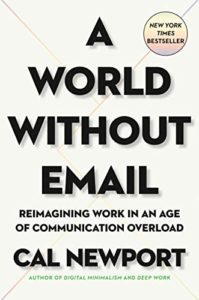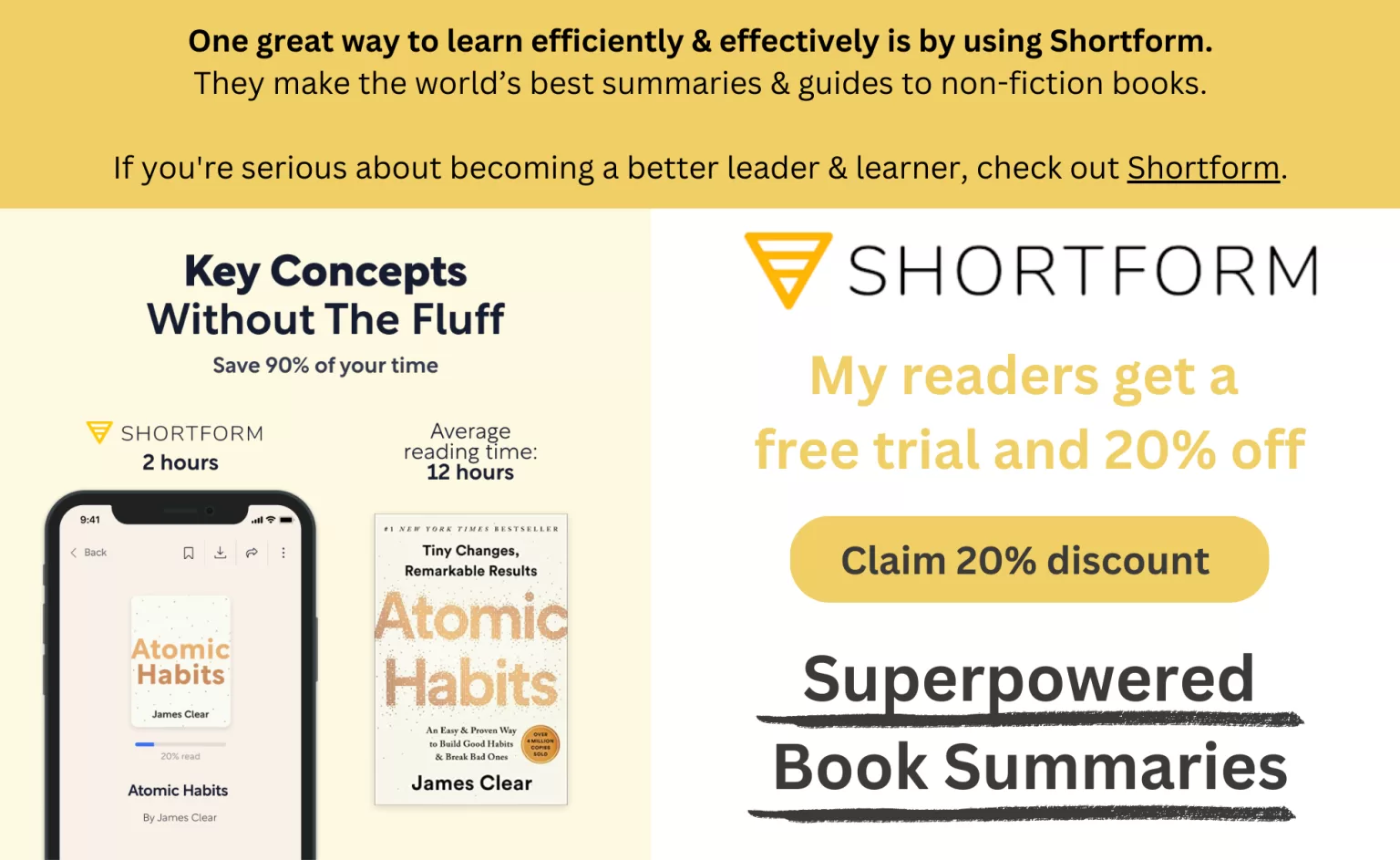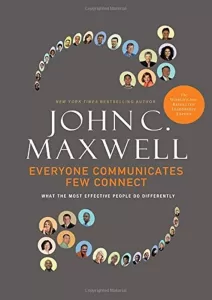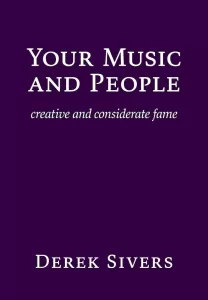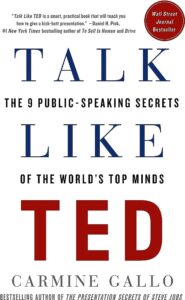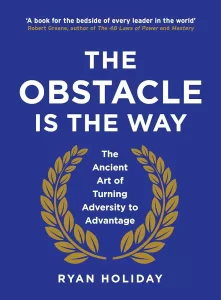Book Review: “A World Without Email”
Book: A World Without Email by Cal Newport
Reviewer: Bobby Powers
My Thoughts: 8 of 10
I love Cal Newport's contrarian thinking. In past books, he's encouraged readers to forgo the passion mindset, embrace boredom, and quit social media. In his newest book, he makes a compelling argument for eliminating (or at least drastically rethinking) email. Newport logically explains how our society has let tools like email and slack control our lives—turning us into hyperactive lemmings who check for new messages every few minutes. Although it's difficult to imagine work without email, Newport offers several practical alternatives and paints a picture of what the modern workplace could look like if we reduced our reliance upon email communication.
What I Learned from the Book
No one decides that a specific piece of new technology will become the new way of doing business. Tools like email and slack spring up out of nowhere, then suddenly become ubiquitous. Their benefits are often obvious (speed, efficiency, etc.), but their detriments can be pernicious (distractions, stress, inability to concentrate on deep work, etc.). We need to evaluate any piece of technology or business platform with a wary eye: what exactly are we gaining and losing by using this tool?
Selected Quotes and Ideas from the Book
The Hyperactive Hive Mind
- "As email spread through the professional world in the 1980s and 1990s it introduced something novel: low-friction communication at scale...We began to talk back and forth much more than we ever had before, smoothing out the once coarse sequence of discrete work activities that defined our day into a more continuous spread of ongoing chatter, blending with and softening the edges of what we used to think of as our actual work."
- "One study estimates that by 2019 the average worker was sending and receiving 126 business emails per day, which works out to about one message every four minutes. A software company called RescueTime recently measured this behavior directly using time-tracking software and calculated that its users were checking email or instant messenger tools like Slack once every six minutes on average."
- Newport refers to our email workflow as the "hyperactive hive mind:"
- Definition: "A workflow centered around ongoing conversation fueled by unstructured and unscheduled messages delivered through digital communication tools like email and instant messenger services"
- "It's this workflow that causes us to spend over a third of our working hours in our inbox, checking for new messages every six minutes. We're used to this now, but when viewed in the context of even recent history, it represents a shift in our work culture that's so radical it would be absurd to allow it to escape closer scrutiny."
- "The story behind the rise of the hyperactive mind is complicated. No one really decided that it was a good idea; it instead arose, in some sense, of its own volition. Our belief that frenetic communication is somehow synonymous with work is largely a backfilled narrative we tell ourselves to make sense of sudden changes driven by complex dynamics."
The Case Against Email
- "The longer one spends on email in [a given] hour the higher is one's stress for that hour." -Research by Gloria Mark, et. al.
- Newport surveyed over 1,500 of his readers to hear their thoughts on email. He was surprised by the strength of emotions that people conveyed. Here are some of the comments he received:
- "I hate that I can never be 'off.'"
- "I'm frazzled—just keeping up."
- "It creates anxiety."
- "I feel an almost uncontrollable need to stop what I'm doing to check email....It makes me very depressed, anxious, and frustrated."
- "As long as we remain committed to a workflow based on constant, ad hoc messaging, our Paleolithic brain will remain in a state of low-grade anxiety."
- "To many, this asynchronous approach to communication seemed strictly more efficient...The problem, of course, is that email didn't live up to its billing as a productivity silver bullet. The quick phone call, it turns out, cannot always be replaced with a single quick message, but instead often requires dozens of ambiguous digital notes passed back and forth to replicate the interactive nature of conversation."
- "For every advantage a new technology offers, there is always a corresponding disadvantage." -Neil Postman
A Better Way to Work
- "Once your organization has fallen into the hive mind, it's in each individual's immediate interest to stick with this workflow, even if it leads to a bad long-term outcome for the organization as a whole. It makes your life strictly easier in the moment if you can expect quick responses to messages that you shoot off to colleagues...The negative consequences of the hyperactive hive mind, in other words, are unlikely to be resolved by small shifts in individual habits."
- "This goal of putting into place smarter workflows that sidestep the worst impacts of the hyperactive hive mind is of course a substantial endeavor—one that will require trial and error and many annoyances. But with the right guiding principles it's absolutely possible, and the competitive advantage it will generate is potentially massive."
- "When it comes to producing value with your brain, the more you're able to complete one thing at a time, sticking with a task until done before moving on to the next, the more efficiently and effectively you'll work...The optimal way to deploy our human brains is sequentially...All things being equal, workflows that minimize this never-ending stream of urgent communication are superior to those that instead amplify it."
- Ideas for increasing productivity and decreasing reliance on email:
- Schedule 2-3 periods of time during the day to check and respond to emails. Keep it closed outside of those time windows.
- Determine "office hours" for when each member of your team will be available for synchronous tasks and fast responses.
- Use a project management tool like Trello or Flow rather than working out of your email inbox.
- Create a physical kanban board to track your projects. Rather than reaching out to team members for every little request, keep a list of questions to ask each person during your next call or 1-on-1 with them.
- Only use email for external communication (with customers, vendors, etc.) and other forms of communication like phone calls for internal communication with other employees.
- Find ways to minimize context switching between tasks. Create blocks of time in your calendar for email and slack, along with blocks of time for deep work.
- Strictly limit your work in process (WIP). Work on one thing at a time.
- Develop specific protocols for when your team will communicate synchronously versus asynchronously and how you will coordinate on cross-functional projects.
Think you’d like this book?
Other books you may enjoy:
Other notable books by the author:
Want to become a stronger leader?
Sign up to get my exclusive
10-page guide for leaders and learners.
